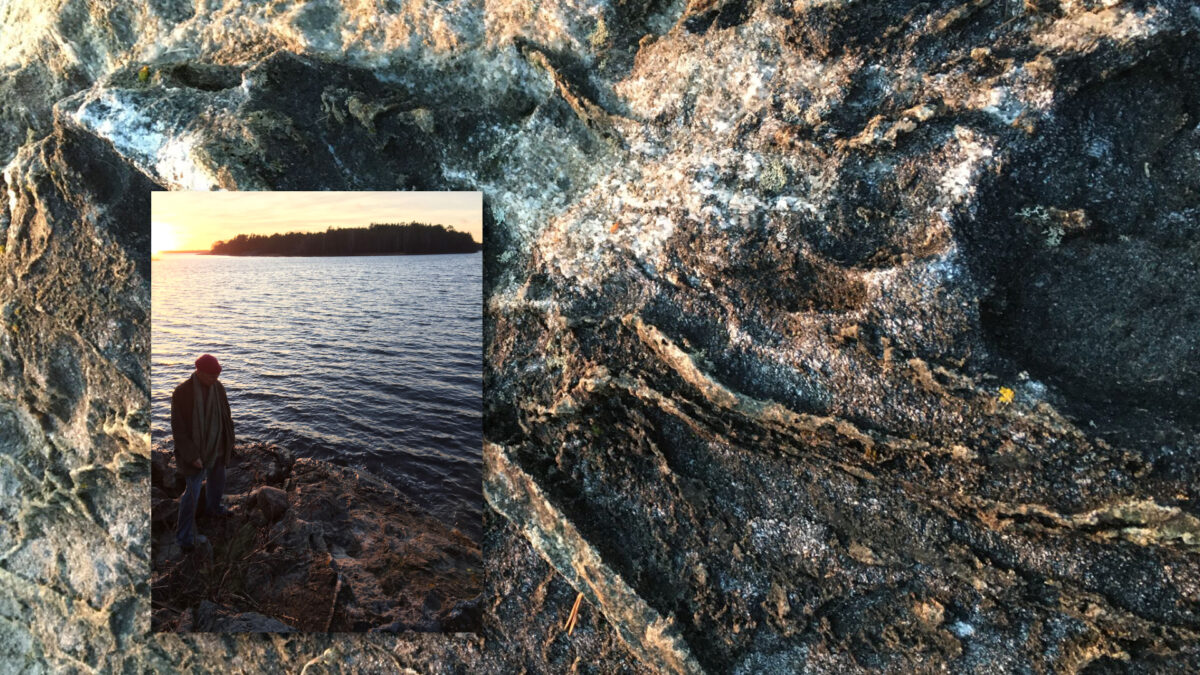Can we think with a place without it having imprinted us?
The artist pack FRAUD (Audrey Samson & Francisco Gallardo) was interviewed by Taru Elfving (CAA) during their residency at Saari Residence (Kone Foundation). The interview can now be read online as part of the series Reviving the Wild that highlights different aspects of ecological activities at Saari.
In their practice, FRAUD traces the myriad impacts of extractive histories and ongoing circulations of matter and capital. As the September-October 2024 invited artists at Saari Residence, they returned to the shores of the Baltic Sea to think alongside the geological deposits and mining sites deeply entangled with the fate of this body of water and its more-than-human community. This enquiry led them to visit Siilinjärvi in Finland, the site of the only active phosphate mine in Europe:
It is rare nowadays that city dwellers, or even people in rural areas, have access to a mining site unless they work in it. Satellite imagery can sometimes be blurred, obfuscating even the view from above. These sites are becoming more and more “invisible.” In 2024, the Siilinjärvi mine still appears in Google maps, which is largely what permitted us to navigate our visit without the help of the staff at the mine. Certainly, the map was out of date, and as a result we were nearly unable to exit a road which had since been closed. That said, it did afford the general exploration of the area immediately surrounding the mine’s fenced perimeter.
Even though we took much photographic and video documentation, we are not interested in recirculating these images of the decontextualized awe-inducing phosphate mountain. Our purpose was not to document but rather to think with and through a place. How can we understand extraction on this scale if we do not walk its never-ending perimeter, smell its leaching acid fumes, or witness the areas of destruction which exist in communities simultaneously bound to mining for their livelihoods? Can we think with a place without it having imprinted us?
FRAUD also continued their dialogue with CAA and the Archipelago Research Institute, and co-organised with Saari a field trip to the limestone quarry in Pargas, Turku Archipelago:
It is unseasonably warm but drizzling as we walk up a slope through the woods. When we reach the site marked on the maps as a viewing place, a panorama over a vast limestone quarry opens up. The thick clouds in the sky mirror the steep banks of cut stone. Everything is bathed in grey. What we see from this designated point of view is only a part of the story of this cavity carved into the earth. The quarry extends beyond the opposite banks, and these days the active mining only takes place deep below the surface, in tunnels. The dust no longer spreads to the centre of the city or out to sea, which both lie right next to the site where we are standing.
Driving back to the mainland from the archipelago, we cross a bridge that was recently found to be structurally unstable. A new larger bridge is under construction, but we have to crawl over the old one alongside numerous trucks transporting products from the quarry, mainly to feed the unsatiable hunger for more cement. A tiny stream of a side product from the quarry – lime spread on fields to bind phosphate from fertilizers to reduce nutrient run-off to waterways – is presented as a solution to the eutrophication of the Archipelago Sea. This specific agricultural product has brought us here on an excursion as part of the residency by FRAUD (Audrey Samson and Francisco Gallardo) at the Saari Residence. Yet, the quarry opens up vistas beyond its immediate surroundings to the global extraction and circulation of both raw materials and capital. What used to be a local business excavating the geological lime deposit, which is rare on these shores, is now home to an international operation recently bought by a multinational corporation backed by major investment companies…
Read the full interview here.
